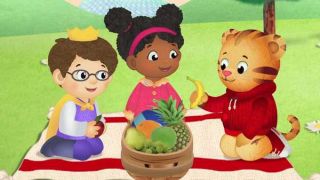Friends
Friendship: The Key to Happiness
Teach relationships and the connected life.
Posted October 26, 2012

From the first tentative meeting to fast friendship - and all along the way - children and adolescents deal with conflicting loyalties, heart-breaking rejection, sad breakups, and happy make-ups. Friendship is a highly complex and emotionally demanding transaction and meeting the challenges of friendship requires emotional awareness and applied strengths. Mr. Rogers taught young children the basic protocol of relationships and his was a happy neighborhood.
Aristotle, the happiness philosopher, wrote at length about friendship. Aristotle was the first person to distinguish between different types of friendship. He described friendships for mutual utility and friendships for mutual goodwill; and claimed that the hallmark of true friendship is reciprocal altruism. Likewise, positive psychology suggests that using signature strengths to promote mutually useful and altruistic friendship assures physical, mental, and emotional well-being. A recent article in the New York Times features the island of Ikaria - where people forget to die - and reports that friendship esnures that the population thrives. Ikaria sounds a little like Mr. Roger's neighborhood - 99 square miles of heaven.
Contemporary psychology identifies four different types of friendship that are defined primarily by the function of the relationship: Acquaintenance, Casual, Agentic, and True. Acquaintances are children and adolescents who are in frequent contact with each other such as text friends, Facebook friends, or playground friends. However, this group of friends does not know each other very well and interact in superficial ways. They do not share the emotional content of their lives and children and adolescents often hide their true emotional selves from acquaintances.
Casual friends share some thoughts and feelings in careful and cautious ways. They interact within closely held boundaries and rarely reveal their emotions or discuss their strengths. They tend to self-edit and do not discuss sensitive or difficult topics. They rarely share their innermost thoughts or feelings and are not emotionally close.
Agentic friendships are pragmatic friendships and typically share a common task, goal, or passion. This type of friendship is utilitarian in nature and students have many agentic friends in school. By definition, classmates, club members, and teammates are all agentic friends who learn to cooperate and collaborate for the good of all. Agentic friends often develop strong bonds quickly because they share a common goal and this type of friendship most easily morphs into true friendship. So the classroom is a laboratory for the incubation of true friendship.
True friends express authentic emotions to each other without fear. They understand that friends must be able to trust each other when they are most vulnerable. There is trust, honesty, empathy, and an exchange of material and social gifts. They offer to help each other without prompting and form committed relationships based on unconditional support. They are true friends who act in caring and generous ways – selfless and transcendent. They learn to share emotional experiences and use their signature strengths in the service of the friendship.
The mark of true friendship is mutual aid, regard, and concern for the other. True friends come to your rescue, celebrate your success as if it was their own, and respect the ebb and flow of your life. They show trust, forgiveness, gratitude, honesty, commitment, support, enthusiasm, and gladness toward their friends without expectation of gain or return. Children and adolescents who learn to take good care of their friends hearts, minds, and souls open the door to true friendship for themselves.
The teacher gives them the key.
Notes
Read: Hruschka, D. J. (2010). Friendship: Development, ecology, and evolution of a relationship. Berkley, CA: University of California Press.
Read: Neyfakh, L. (September 2012). How kids make friends and why it matters. Boston: Boston Globe. http://www.bostonglobe.com/ideas/2012/09/01/how-kids-make-friends-and-w….
Read: Pangle, L.S. (2002). Aristotle and the philosophy of friendship. Cambridge: Cambridge Press.
Read: Buenner, D. (October 28, 2012). The island where people forget to die. New York, New York Times, MM36. The Island Where People Forget to Die
Explore: Fred Rogers Company, Making Friends, http://www.fredrogers.org/new-site/par-friends.html
Visit: PBS Mr. Rogers Neighborhood http://pbskids.org/rogers/
__________
I would love to hear from you. What kind of friends do you have in your life? Do you have many acquaintances? How about casual friends? Under what circumstances have you made agentic friends? Do you have a true or best friend? How did you make that friend? How do you keep that friend? Have you lost a friend? Why? Was there a time in your life when a friend was the difference between your success and your failure?
My upcoming book, Positive Psychology in the Elementary School Classroom, is the first in a series intended to help teachers build positive psychology classrooms. http://books.wwnorton.com/books/Author.aspx?id=23961




